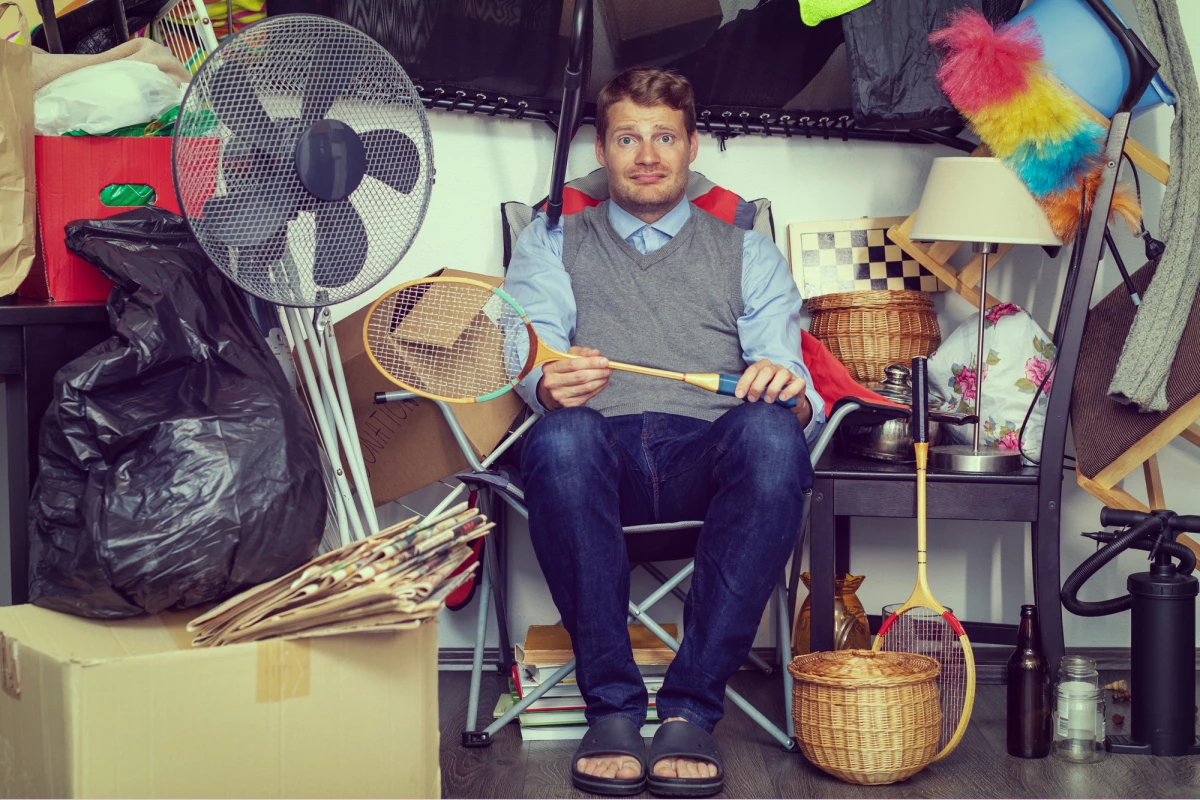A new study has found that incorporating virtual reality into therapy for hoarding disorder, allowing people to virtually dispose of clutter, reduced symptoms and increased real-life discarding of objects. It suggests the technology could provide an effective treatment for this often-distressing condition.
Characterized by persistent difficulty discarding or parting with possessions due to a perceived need to save them regardless of their value, hoarding disorder is a common and debilitating psychiatric condition. More prevalent in people over 60, the condition can cause problems in relationships, social and work activities.
Not much is known about what causes hoarding disorder. Previously thought to be a subtype of obsessive-compulsive disorder (OCD), it’s only recently, since 2013, been included in the Diagnostic and Statistical Manual of Mental Disorders, the DSM-5. It’s also frequently underdiagnosed.
While the first-line treatment is cognitive behavioral therapy (CBT), a substantial number of people still remain impaired by their hoarding symptoms after treatment. Now, a new study by Stanford Medicine has examined the effectiveness of incorporating virtual reality (VR) into the treatment of people with hoarding disorder.
“Some people are in such dire need, but we can’t go into their homes,” said Carolyn Rodriguez, a senior author of the study. “The clutter is stacked so high that it’s dangerous for our team to go inside. Yet, practicing letting go of items is such a useful skill that we wanted to create a virtual and safe environment.”
Nine participants, aged over 55 and diagnosed with hoarding disorder, took photos and videos of the most cluttered room in their home and 30 possessions. The photos and videos were transformed into custom navigable 3D virtual environments in which participants could manipulate their possessions.
All participants attended a 16-week online facilitated group therapy session that provided peer support and cognitive behavioral skills related to hoarding. For weeks seven to 14, they also received individual clinician-guided VR sessions in which they practiced placing their ‘objects’ into recycling, donation, or trash bins – the latter was removed by a virtual garbage truck.
The researchers say using VR enabled participants to better understand their attachment to the objects they hoarded and presented a less threatening version of real-life discarding.
“It’s nice to be able to titrate in a virtual space for people who experience considerable distress even attempting to part with possessions,” Rodriguez said.
Seven of the nine participants self-reported improved hoarding symptoms, with an average decrease of 25%. Eight of them also had less clutter in their homes, confirmed by visual assessment by clinicians, with an average decrease of 15%. Although the results were comparable to those who received group therapy without VR, the researchers say this small initial trial demonstrated that the inclusion of VR therapy was feasible, even for older adults.
“I actually thought it might not work because these were older patients, and maybe they would not like the technology, or they would be dizzy – but they thought it was fun,” said Rodriguez.
Most participants reported that VR helped them part with their possessions in real life, though some found the experience unrealistic. The researchers hope that newer technology will improve the VR experience and perhaps lead to the use of augmented reality (AR), where virtual objects are overlaid in the patient’s actual home.
Regardless, the researchers say their study goes some way to removing the stigma associated with hoarding disorder.
“People tend to have a lot of biases against hoarding disorder and see it as a personal limitation instead of a neurobiological entity,” Rodriguez said. “We just really want to get the word out there that there’s hope and treatment for people who suffer from this. They don’t have to go it alone.”
The study was published in the Journal of Psychiatric Research.
Source: Stanford Medicine





